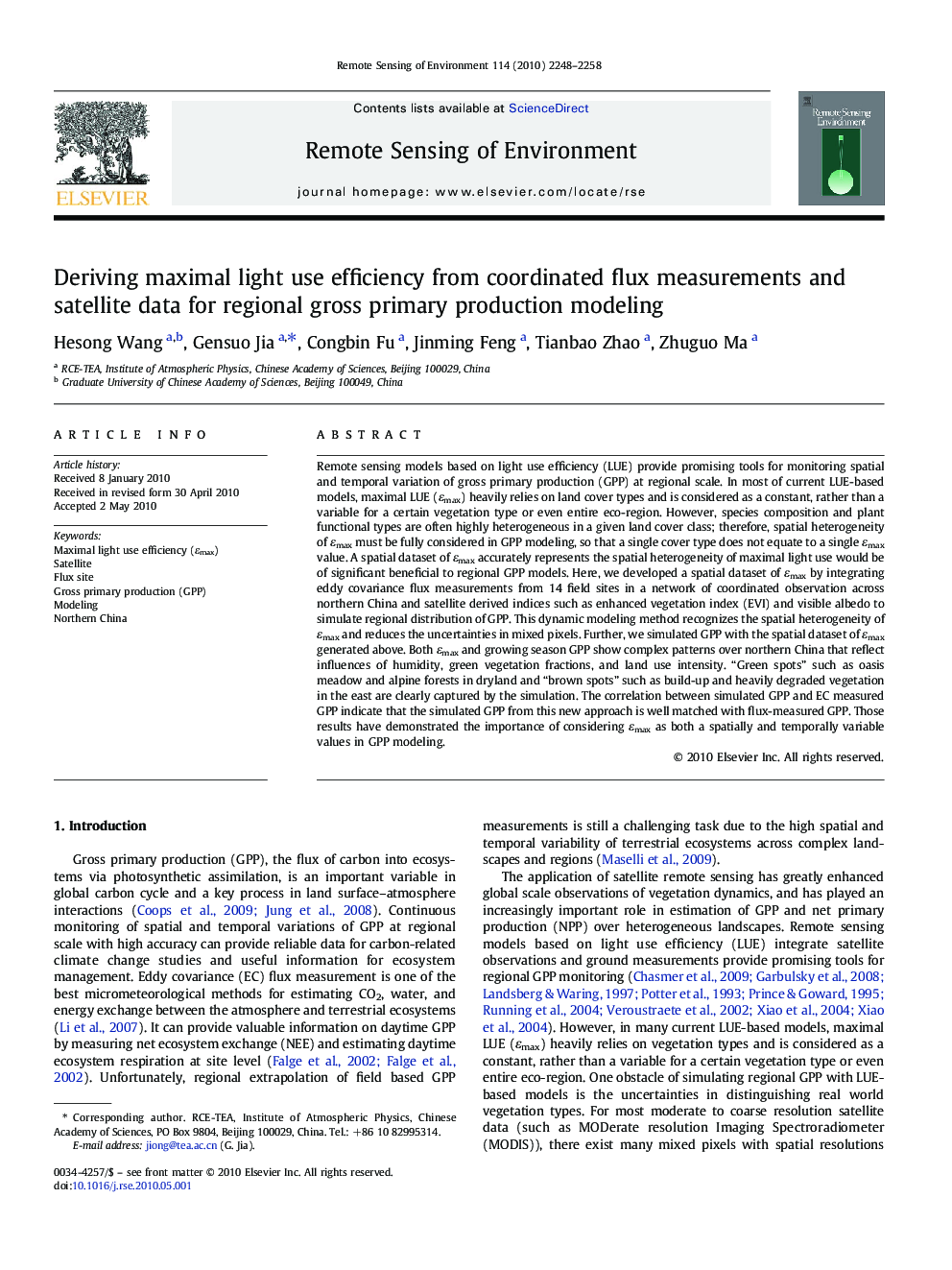| کد مقاله | کد نشریه | سال انتشار | مقاله انگلیسی | نسخه تمام متن |
|---|---|---|---|---|
| 4459616 | 1621299 | 2010 | 11 صفحه PDF | دانلود رایگان |

Remote sensing models based on light use efficiency (LUE) provide promising tools for monitoring spatial and temporal variation of gross primary production (GPP) at regional scale. In most of current LUE-based models, maximal LUE (εmax) heavily relies on land cover types and is considered as a constant, rather than a variable for a certain vegetation type or even entire eco-region. However, species composition and plant functional types are often highly heterogeneous in a given land cover class; therefore, spatial heterogeneity of εmax must be fully considered in GPP modeling, so that a single cover type does not equate to a single εmax value. A spatial dataset of εmax accurately represents the spatial heterogeneity of maximal light use would be of significant beneficial to regional GPP models. Here, we developed a spatial dataset of εmax by integrating eddy covariance flux measurements from 14 field sites in a network of coordinated observation across northern China and satellite derived indices such as enhanced vegetation index (EVI) and visible albedo to simulate regional distribution of GPP. This dynamic modeling method recognizes the spatial heterogeneity of εmax and reduces the uncertainties in mixed pixels. Further, we simulated GPP with the spatial dataset of εmax generated above. Both εmax and growing season GPP show complex patterns over northern China that reflect influences of humidity, green vegetation fractions, and land use intensity. “Green spots” such as oasis meadow and alpine forests in dryland and “brown spots” such as build-up and heavily degraded vegetation in the east are clearly captured by the simulation. The correlation between simulated GPP and EC measured GPP indicate that the simulated GPP from this new approach is well matched with flux-measured GPP. Those results have demonstrated the importance of considering εmax as both a spatially and temporally variable values in GPP modeling.
Journal: Remote Sensing of Environment - Volume 114, Issue 10, 15 October 2010, Pages 2248–2258